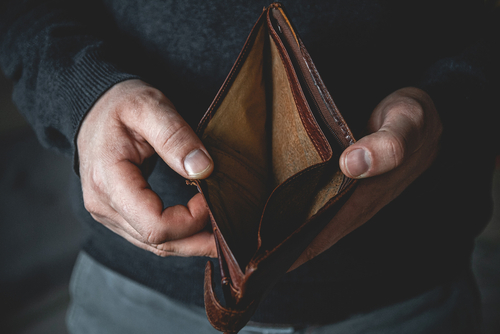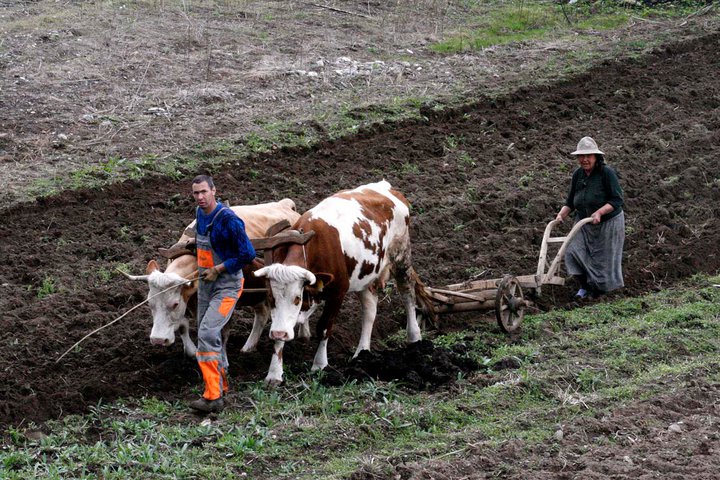
In spite of the overall wealth of the European Union poverty in the EU is still at a rela tively high level. Nearly 1 in 7 people are at risk of poverty. The reality is that poverty in the EU is a very real problem which brings misery to the lives of many people. This is a direct attack on people’s fundamental rights, limits the opportunities they have to achieve their full potential, brings high costs to society and hampers sustainable economic growth.
More than 34% of Romanians were at risk of experiencing poverty and social exclusion last year, by far the highest proportion among European Union member countries in 2022, Eurostat data published in July show. Romania is surpassed only by Bulgaria in the percentage of the population unable to afford an adequate meal. Last but not least, a significant percentage of the population is facing power supply poverty. In the winter of 2021-2022, one in ten Romanians could not maintain their homes warm.
Last year, 95.3 million people in the EU (equivalent to 21.6% of the population) were at risk of poverty and social exclusion, according to the European Statistical Office. In other words, these people lived in a household facing at least one of three situations: at risk of poverty, severe material, and social deprivation and/or lived in a very low work intensity household. Eurostat says the figures have remained relatively stable compared to 2021, when 95.4 million people in the EU (22% of the population) were at risk of experiencing poverty and social exclusion.
One third of Romania’s population at risk of poverty
Among Member States, the highest shares of people at risk of poverty and social exclusion were in Romania (34.4%), Bulgaria (32.2%), Greece and Spain (both 26%), while the lowest shares were in the Czech Republic (11.8%), Slovenia (13%) and Poland (16%).
At European Union level, the risk of poverty and social exclusion was higher for women than for men in 2022 (22.7% compared to 20.4%). Also, more than one fifth (22.4%) of the European Union population living in a household with dependent children was at risk of poverty and social exclusion. At the same time, around 10% (8.3%) of the EU population could not afford a meal containing meat, fish or the equivalent in vegetables once every two days in 2022, up by one percentage point compared to 2021. Moreover, among people at risk of poverty, the share of those in the EU who could not afford an adequate meal was 19.7% in 2022, up 2.2 percentage points compared to the situation in 2021.
This difference between the total population and those at risk of poverty in terms of their ability to afford an adequate meal was also visible among EU Member States. The highest proportion of people at risk of poverty who could not afford an adequate meal was in Bulgaria (44.6%), followed by Romania (43%) and Slovakia (40.5%). At the other end of the scale, the lowest percentages were in Ireland (5%), Luxembourg (5.1%) and Cyprus (5.6%). When it comes to the total population, 22.1% of Romanians could not afford an adequate meal in 2022, the highest percentage in the EU, compared to only 1.4% of Irish.
Romania has the most vulnerable young people facing significant material and social deprivation
Romania is also poor when it comes to the percentage of young people facing significant material and social deprivation. According to a Eurostat report, 6% of young people in the European Union aged 15-29 are experiencing significant material and social deprivation, based on 2021 data. Among EU countries, the highest proportion of young people experiencing significant material and social deprivation in 2021 was recorded in Romania (23.1%), followed by Bulgaria (18.7%) and Greece (14.2%). This proportion was below 3% in 11 of the 26 EU Member States with available data, namely Luxembourg, Poland, Sweden, Cyprus, the Czech Republic, the Netherlands, Croatia, Slovenia, Finland, Austria and Estonia. The rate of significant material and social deprivation (SMSD) is an indicator that shows the severe lack of necessary and desirable items for an adequate living.
The indicator distinguishes between people who cannot afford a particular good, service or social activity. This rate is defined as the percentage of the population experiencing enforced multiple deprivation at both household and individual level. In other words, these young people cannot afford, for example, to pay their rent or even to meet certain unexpected expenses.

According to the report, in 2021 the share of young people aged 15-29 at risk of poverty reached 20.1%, compared to 16.8% of the total population. Among 19 EU countries, the biggest deviation from the average is observed in Denmark (12.3% of the total population at risk of poverty compared to 25.6% of young people) and Sweden (15.7% compared to 24.6%). In Greece, 26% of young people are at risk of poverty compared to 19% of the total population. In eight EU countries, young people are less at risk of poverty than the population per total. The most visible differences were observed in Latvia (23.4% of the total population at risk of poverty compared to 17% of young people), Malta (16.9% compared to 11.3%), Estonia (20.6% compared to 15.7%) and Croatia (19.2% compared to 14.7%).
The at-risk-of-poverty rate is, according to Eurostat, the share of people with an equivalized disposable income below the at-risk-of-poverty threshold, which is set at 60% of the national median disposable income. This indicator does not measure wealth or poverty, but low income compared to other residents of a country, which does not necessarily imply a low standard of living.
Romania also has power supply poverty
In Romania, in order to combat electric power supply poverty, vulnerable consumers must first be identified. Romania urgently needs a national strategy to address power supply poverty, as it has worsened and vulnerable consumers are still exposed to future crises, Anca Sinea, coordinator of the Romanian Observatory on Power supply Poverty, recently warned. Anca Sinea points out that Romania not only lacks a strategy to tackle power supply poverty, but “violates a legal obligation” of over 10 years in the 2012 Power supply Law, which calls for the creation of a National Action Plan to combat power supply poverty. According to the ORSE coordinator, in order to really take effective measures to support the population and prevent the shocks of future crises, there is an urgent need to know the exact situation of consumers at risk of power supply poverty (so-called vulnerable consumers) or already facing this situation.
“Today, no one can live in a dignified and healthy way without power supply . Access to power supply is an essential human right, stipulated in the European Pillar of Social Rights. It is the duty of every state to ensure that all citizens have access to this essential service of life. In the face of winters that are uncertain what power supply prices will bring, the latest Eurostat data show a stark reality: one in ten Romanians (10.1% of the population) will not be able to keep their homes warm enough in 2021. This is above the EU average of 6.9% and puts us among the most vulnerable countries in this respect. Therefore, consistent long-term solutions are urgently needed to keep Romanians from shivering in their homes. And these solutions can only be found together, through dialogue, cooperation, and a concrete action plan! Power supply poverty is a problem for society as a whole”, said Anca Sinea.
The Romanian Observatory on Power supply Poverty (ORSE) is a project initiated by the Centre for the Study of Democracy, a think-tank established in 2006 within the Department of Political Sciences, Faculty of Political, Administrative and Communication Sciences, “Babeș-Bolyai” University of Cluj, where it operates as an accredited research centre.



 Subscribe
Subscribe